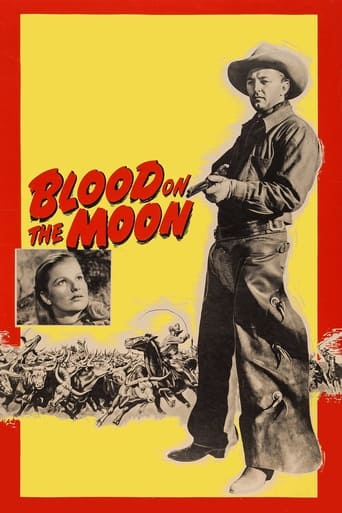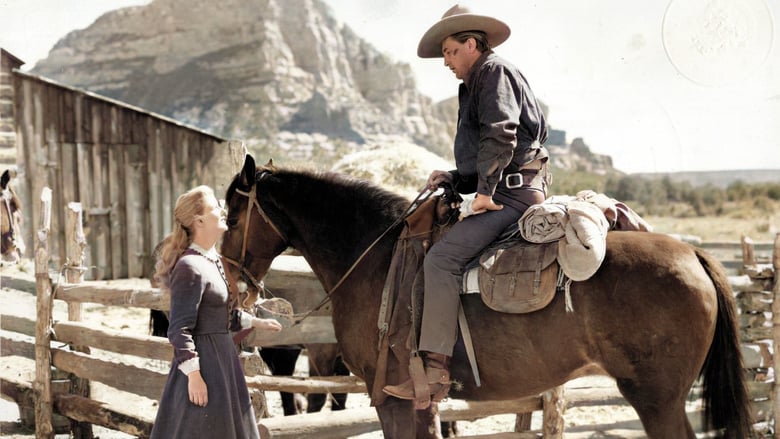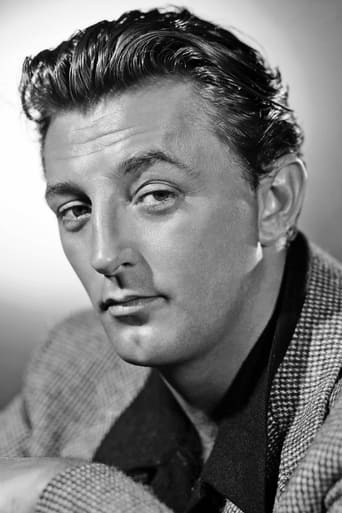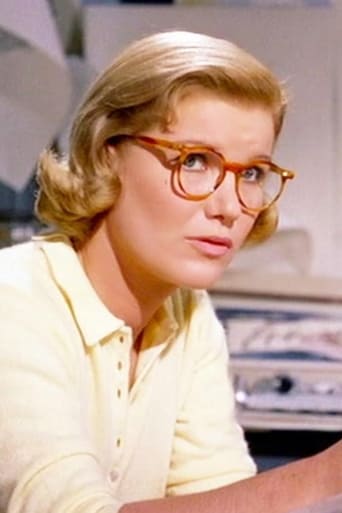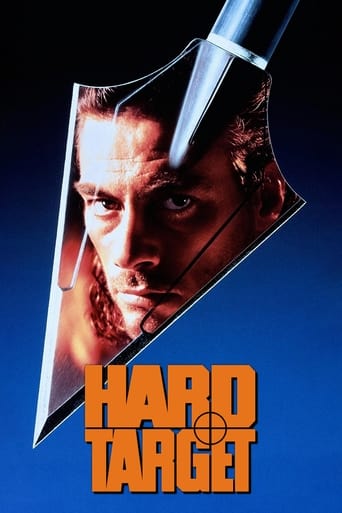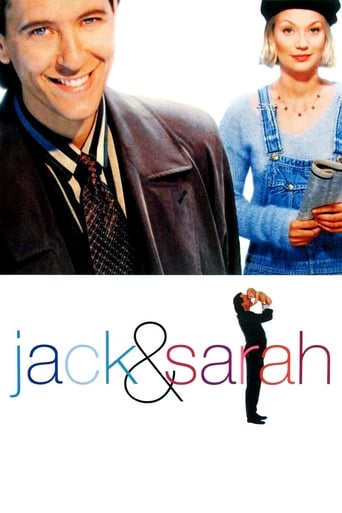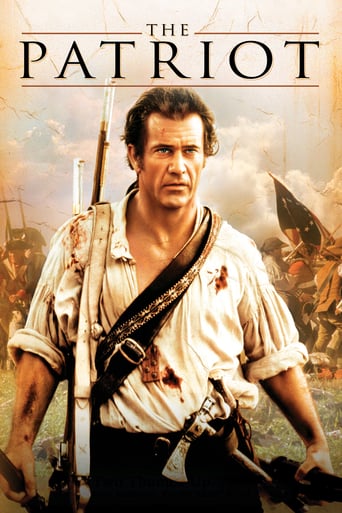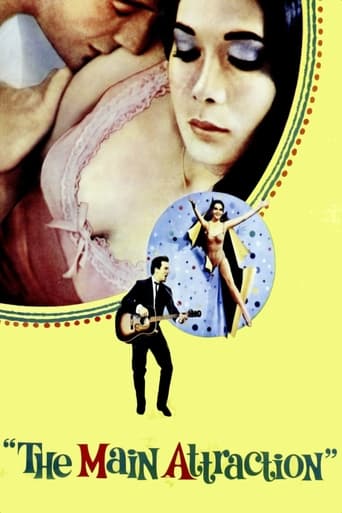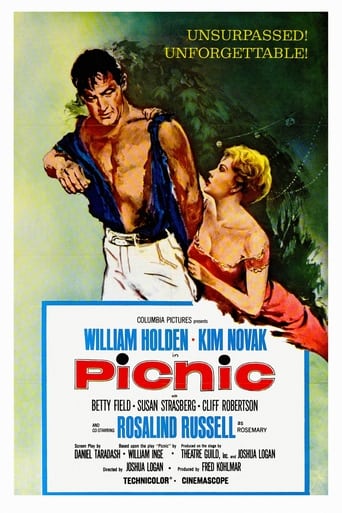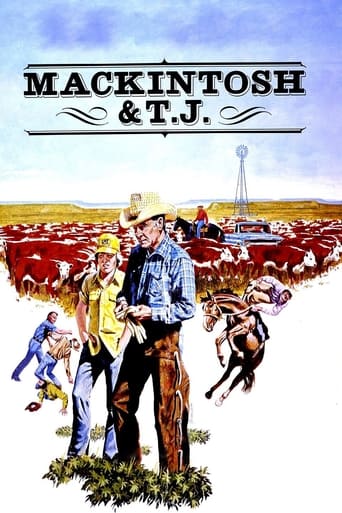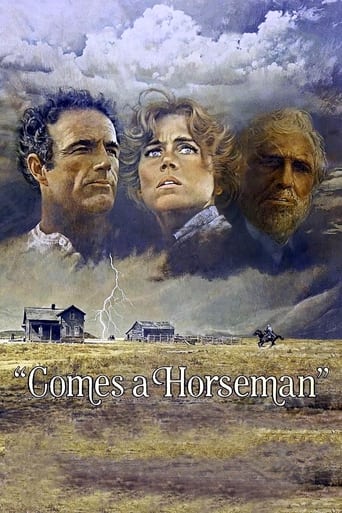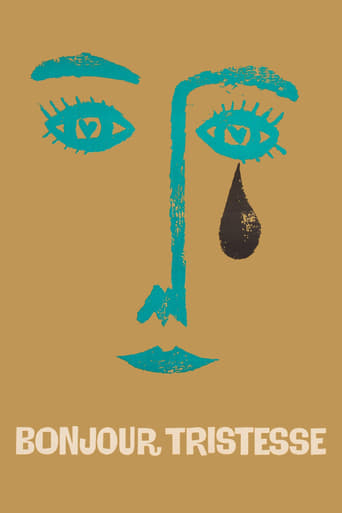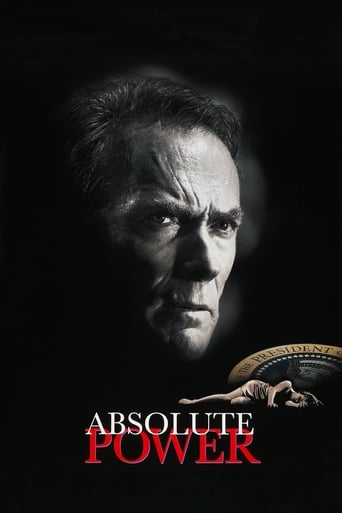Blood on the Moon (1948)
Down-and-out cowhand Jim Garry is asked by his old friend Tate Riling to help mediate a cattle dispute. When Garry arrives, however, it soon becomes clear that Riling has not been entirely forthright. Garry uncovers Riling's plot to dupe local rancher John Lufton out of a fortune. When Lufton's firecracker of a daughter, Amy, gets involved, Garry must choose between his old loyalties and what he knows to be right.
Watch Trailer
Cast


Similar titles
Reviews
Never having met a genre he couldn't master, director Robert Wise graduates from the Val Lewton academy with honors thanks to a magical fantasy outing with Curse of the Cat People, getting one of the greatest performances of the career from Boris Karloff in The Body Snatcher, then applying his evolving talents behind the camera to the mean film noir Born to Kill with Lawrence Tierney and Claire Trevor (not to mention, helping to "assist" in the troubled production of The Magnificent Ambersons, which had Orson Welles' work raped of nearly an hour and destroyed without his input, and Wise directing additional footage at RKO studios' urging). In the Robert Mitchum oater, Blood on the Moon, Wise and director of photography Nicholas Musuraca make sure the film is viewed as dark and even a bit foreboding (notice early scenes where Mitchum is interrupted of his rest by a cattle herd moving through and a cowboy not realizing he was camping thereabouts, or Mitchum hiding amongst the darkened alleys of the town for which the characters frequent as Preston's gunmen are out to find him), with a strong sense of rising and accumulating tensions and anxiety (homesteaders are not quite happy with cattleman's land grazing herd, Preston wanting to capitalize on that while also using an Indian agent to utilize the army to enforce a mandate on getting the cows off of reservation land or else risk losing them, Mitchum coming to terms with how separate factions within a territory are fractured thanks to Preston, his own friend from the past, almost exclusively).Robert Preston gets a plum antagonist role as a manipulative scoundrel who will use his devious charm to turn the daughter of his rival cattleman against him, his influential voice to entrap the homesteaders into feeling accosted by the cattleman's "intrusive herding", and cunning to swindle cattle cheap by using resources (the army, his greedy gunmen to stir up the herd, and friendship with Mitchum to use his shooting abilities, as well as a middle man to negotiate the buy and sell of the cattle since the cattleman would never sell to Preston) available to him through various means.Phyllis Thaxton (Ma Kent in the Christopher Reeve Superman of 1978) is the cattleman's daughter seduced by Preston, Barbara Bel Geddes (Dallas, TV show) the other daughter who falls in love with Mitchum when his conscience convinces him to remove himself from Preston, and Walter Brennan as a homesteader who loses his son in the herd stampede orchestrated by Preston all co-star. Charles McGraw (of The Narrow Margin) has a minor part as another homesteader, with Frank Faylen (of "Dobie Gillis") as the corrupt Indian agent (working in cahoots with Preston over robbing the cattleman of the proper price for the herd, hoping to make a handsome profit with the army) and Tom Tully (as the cattleman, Lufton) round out the cast of recognizable faces you might see turn up on westerns and television during occasionally. The noirish look and feel of this western gives it a distinctive edge over westerns you might see with Randolph Scott around the same time or later (not discounting Scott's work with Boetticher, mind you). Also included is a marvelous round of fisticuffs between Mitchum and Preston in a saloon, just literally bringing the house down, and a shadowy gunfight at the end that mirrors the shootouts of gangster films just a decade or so (and during this period still with the detective/crime movies being released) in alleys or city streets. I saw quite a similarity between the dark-and-moody standoff in Blood in the Moon and about two decades later in the underrated and terrific Monte Hellman western, Ride in the Whirlwind.It's no surprise that Mitchum successfully carries the film, as he was just about three years removed from his star-making turn in The Story of GI Joe and one year after Out of the Past, considered a top three film noir classic. Bel Geddes matches him as the feisty love interest. Her ballsy gun-to-gun standoff towards the beginning is a real beaut. Mitchum having to tell Brennan his son's dead and, in turn, Brennan contemplating so much loss and little gain since listening to Preston is another key scene. Again, the mood lighting and use of shadow applied to this western certainly gives it a look that stands it apart from other westerns. A gem worth checking out.
This Western was directed by Robert Wise and has a fine, experienced cast. The story is a familiar one. One old chum (Preston) sends for another old chum (Mitchum) to offer him a job. The problem is that, though a juxtaposition of circumstance, it's a lousy job, even though it would pay well. Mitchum is supposed to help Preston and his gang of low lifes scam the local farmers, like Walter Brennan, and an honest rancher, Tom Tully, out of his cattle. The means are too complicated to bother explaining.It must be one of the least glamorous Westerns ever filmed. The opening shots are of Mitchum alone on horseback, riding over some dark hills in the middle of a torrent. He's drenched and uncomfortable. Few people in the story look comfortable. It's cold and turns snowy. The men are bundled up in winter clothing and wear tall ugly cowboy hats. They tend to wear chaps, which are really fit only for stylization, like Robert Duval's woolly chaps in the original "True Grit." In a minor role, Charles McGraw lumbers around in what looks like a bear costume, growling his observations.The women look delicate though. Barbara Bel Geddes is attractive and ends her lines with the terminal contours of an upper-class school girl from Rosemary Hall. Phyllis Thaxter, I think, is miscast as Preston's naive girl friend. She's purity personified and it's hard to swallow her attraction to a lying, mustachioed villain like Preston. Lust is not exactly her forte.Many of the scenes take place at night and everything looks depressing. It captures the atmosphere all right but the atmosphere is something from Dante's Purgatorio.In the course of the tale, Mitchum changes his mind, sides with the good guys, has a brutal fist fight with Preston, finally has a shoot out with the villains, and ascends Mount Purgatory to the peaceful summit, hand in hand with Bel Geddes.There's a lot of energy on screen but little of it looks original. Mitchum is a bit plump and sleepier than in some of his other work. But it must be said that after that unsparing, barbaric fight in the bar room, Mitchum and the make up department, allowed him to look like hell, his long hair hanging in strands over his ears, sweating and panting as the usual heroes never do. There are also some impressive shots of a pursuit through the snow. All of it might have been better done in color.
This movie is entertaining due to the writing. Every cliché found in so many other westerns of this era, are found in this movie! The first time i saw it, i noticed the number of them, but as i talked to others who viewed, we decided to watch again and count them. It was a great way to view an old movie as well as count the number of clichés used. The action is fast and in black and white the movie is perfect as it does achieve its goal of entertainment. It doesn't really have an original western genre plot but nonetheless i think you will find it fun and worth your movie time. it is always nice to see an "action" movie with more talking than action too!
This is an excellent film noir Western. "Range war" Westerns aren't my favorite sub-genre, but this is the best one I've seen. I gave it an eight out of ten IMDb ranking. It scored 18 points in my ranking system, which is very high. I'll use this review to compare it favorably to "Shane", a film it shares a number of plot elements with. Like Shane, Jim Geary is a drifter/gunfighter who winds up in the middle of a range war. However, Geary's role is a little like Jack Wilson's, the character Jack Palance played in "Shane" i.e. Geary's the hired heat brought in to drive off the homesteaders (in this case, the "good" rancher). While Shane's conflicts are mostly internal, Geary's are both internal and external i.e. he defects from the "bad" side to the "good" side. One of my main criticisms of "Shane" is that it is too boring. The difference in Geary's role is one of the reasons that "Blood on the Moon" is more interesting, well paced and exciting. Robert Mitchum is just fantastic in this. Unlike Alan Ladd, he looks the part of a charismatic tough guy. More importantly, though, the script acknowledges that his character has a legitimately bad past. Do we ever for a minute think that Shane was a bad guy once upon a time? This is the implausible myth of the "poor gunfighter", which as far as I know, was first presented as Jimmy Ringo in "The Gunfighter". Jim Geary is more Will Munny than Jimmy Ringo. Robert Preston's devilish charisma is on full display in his characterization of the heavy, Tate Riling. Emile Meyer was good as the heavy in "Shane", but his character can't compare to the color and complexity of Riling. In fact, Riling's not even the evil rancher, but a third party adventurer who is playing the ranchers and homesteaders off against each other. Again, this leads to more complicated and clever plot developments than in "Shane". There are two romantic subplots in "Blood on the Moon", both of which take place with well developed (in terms of plot) female characters who are not gratuitous sex objects. Compare to "Shane", where there is no romance outside of the Starret's ten year wedding anniversary.Range war Westerns often get stuck out on the prairie and don't take enough advantage of Western landscapes. George Stevens solved this brilliantly by setting his movie at the base of the Grand Tetons. Still, the movie gets stuck going back and forth from the Starret ranch to the town. "Blood on the Moon" matches "Shane" by setting the story in the foothills of the Sedona mountains in Arizona, but avoids "Shane's" problems by moving the story around aggressively. There several cattle drives, two different towns and most importantly, a thrilling chase into the snow covered Sedona mountains. This is the only black and white movie I've awarded the maximum points in my landscape category. Wise weaved important historical texture into his film by setting it next to an Indian reservation. The government Indian agent is a key player in the plot and they even work an Indian character in, something difficult to do in a "Range War" Western. I've criticized "Shane" for the lack of Indian themes, not because every Western should have Indian themes, but because a movie that was intended to be the "archetypal" Western and is reputed by many to be the best Western of all time, should have at least made an effort. "Blood on the Moon" demonstrates that it can be done in a range war context. That's it for the "Shane" comparisons. Some other things I liked: Walter Brennan is excellent in this. It's kind of funny, people of my generation only knew him as a comedic buffoon. From my point of view, he's always very effective in these early movies, when he mostly played against that type. It's one of the reasons John Wayne is so good in "The Searchers" and "Red River". Those are the only Westerns where he didn't play "John Wayne". There's a fabulous scene where Mitchum faces down two of Riling's henchman. It's great because there's no gunfire involved. He marches across the street, calls them out and they chicken out. These are the kind of scenes that can make a movie (And not to rag on "Shane" too much, the same can be said for the Elijah Cook Jr.'s gripping murder scene in that movie). I appreciate the fact that there isn't an uncomfortable age gap between Mitchum and Bel Geddes. It doesn't sound like a big deal, but it is a rarity. Not my cup of tea exactly, but I should point out there is an excellent fist fight between Mitchum and Preston. There are several of great lines. Again these are the types of things that can make movies. "I've seen dogs that wouldn't claim you for a son, Tate." "No law says a man has to go by the wagon road" "I always wanted to shoot one of you. He was the handiest." "We could've licked them you and me, but you always had a conscience breathing down your neck." I don't have much to say on the negative side. Riling's henchman were poorly drawn, especially in comparison to "Shane's" Jack Wilson. It could have used some relief from the tension, maybe some music or comedy, but I guess that was the whole point of the film noir genre - to wind you up as much as possible. It's a bit dated, but far less stiff and corny than most movies from that era (including "Shane"). In that sense, it was way ahead of its time.

